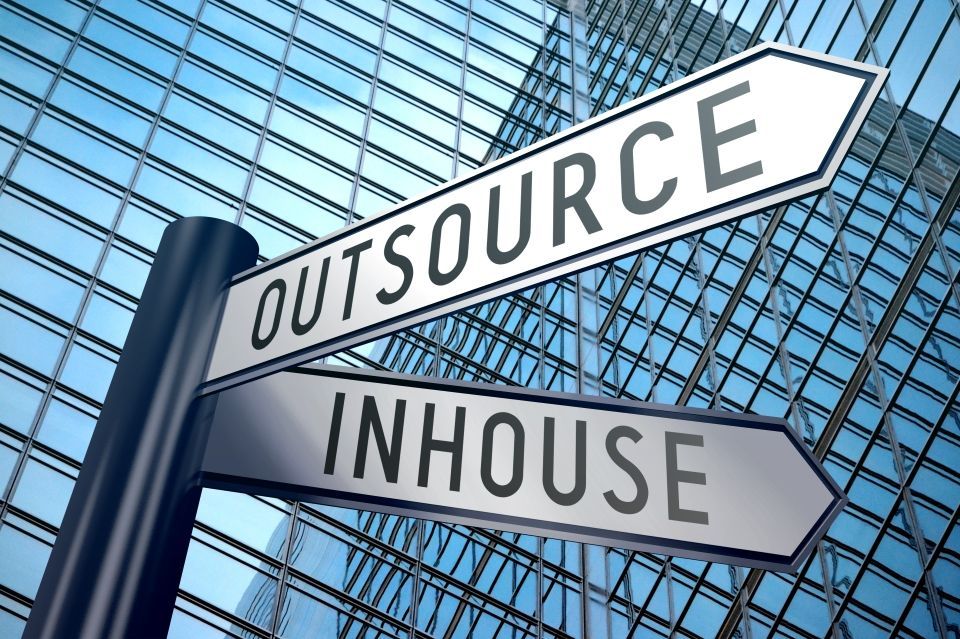Which is Better? Having Servers On-Premise or in the Cloud?

The decision of whether to have servers on-premises or in the cloud depends on numerous factors, including your specific needs, budget, and technical requirements. Not every solution is right for every client. It is important to evaluate all your options before investing in technology for your business. That is where Seifert Technologies team can help. We have been working in the technology field for decades helping clients choose the right technology solutions for their business models.
What is a Server:
First, let’s look at what a server is. A server is a computer or system providing resources, data, services, or programs to other computers, known as clients, over a network. That server can be either accessed through the internet or accessed by computers on-premise. Servers essentially provide "services", such as sharing data or resources among multiple clients or performing computations for a client.
A server can be a computer, software program, or even a storage device. It can provide one service or several. Typical types of servers include database servers, file servers, mail servers, print servers, web servers, game servers, and application servers.
Physical vs. Virtual Servers:
A physical server is a computer hardware “box” that houses main boards, processors, memory, storage, fans, and power supplies to support the server services. It can run a single instance of a server operating system, or it can function as a hypervisor hosting multiple virtual servers. A virtual server is a single instance of an operating system running server services; it is a program that is running on a physical server. Because a virtual server is reliant on physical server hardware, there are limitations on how many virtual servers can run on a physical server. This is why planning your environment is important, to make sure you have the horsepower required to run your server infrastructure, whether that’s in the cloud or on-premise.
What is the Difference Between a Cloud or On-Premise Server:
A cloud server and an on-premise server refer to two different approaches to hosting and managing computer resources. The difference between a cloud server and an on-premise server is just where the server is located, and how you pay for the hardware that is running the virtual servers. On-premise servers are located within your buildings, on equipment you have purchased or leased. Cloud servers run in a hosting facility somewhere that is accessible via the internet, and you pay monthly for the use of that equipment. You can make your on-premise servers securely accessible from the internet, making your own private cloud servers.
Advantages of On-Premise Servers:

- Data Control: On-premise servers give you direct control over your data and infrastructure. This can be crucial if you have strict security or compliance requirements that necessitate maintaining sensitive data within your own premises.
- Reduced Latency and Improved Speed: On-premise servers can offer lower latency and faster data transfer speeds, especially when dealing with large datasets or real-time applications that require immediate data processing.
- Build to suit: Having servers on-premise allows you to tailor the hardware and software configurations to your specific needs, optimizing performance for your applications.
- Reduced Monthly Cost: On-premise servers are a capital expense rather than an ongoing monthly expense for cloud servers. Often the total cost of ownership over 5 years is less with on-premises servers versus cloud servers.
Disadvantages of On-Premise Servers:
- Maintenance Costs: Maintaining your equipment is your responsibility. There will be costs associated with setting up an on-premise system, with upfront costs for purchasing and installing IT infrastructure, plus ongoing maintenance, storage, power consumption, and IT support costs.
- Scalability: On-premise servers have limited expansion capabilities once purchased, which can limit scalability unless you buy more servers.
- Backup and Disaster Recovery: Having a good backup and disaster recovery system is critical; the loss of data can have severe consequences to businesses.
- Technical expertise: On-premise hosting requires technical expertise from an IT professional like the team at Seifert Technologies.
Advantages of Cloud Servers:
- Scalability: Cloud servers are in a server farm with a lot of hardware. They provide the ability to easily scale resources up or down based on demand. You can quickly add or remove virtual machines, storage, or computing power as needed, allowing for flexibility and cost-efficiency.
- Pay as you go: Cloud servers eliminate the need for upfront investments in hardware and infrastructure. Instead, you pay for the resources you consume on a pay-as-you-go basis. This can be particularly beneficial for small businesses or startups with limited budgets.
- Reliability and uptime: Cloud servers are typically built on a robust infrastructure with redundant components and multiple data centers. This setup enhances reliability and ensures high availability, minimizing the risk of downtime.
- Geographic flexibility: Cloud servers allow you to deploy your infrastructure in different regions around the world. This enables you to serve customers in various locations and comply with data residency regulations.
- Easy management: Cloud service providers often offer user-friendly management interfaces and APIs, making it easier to manage and monitor your virtual servers. You can automate tasks, such as provisioning and scaling through APIs or infrastructure-as-code tools.
- Maintenance: the maintenance of your servers is typically an included service as part of your subscription
Disadvantages of Cloud Servers:
- Internet dependency: Cloud servers rely on Internet connectivity. If your internet connection is unreliable or experiences downtime, it will affect your ability to access and use cloud resources.
- Data security and privacy concerns: Storing data on a cloud server means entrusting it to a third-party provider. While most providers have robust security measures in place, there may still be concerns about data breaches, unauthorized access, or compliance with data protection regulations.
- Performance variability: The performance of cloud servers can be subject to variability due to factors like shared infrastructure and network congestion. While providers usually guarantee certain levels of performance, it may not always be consistent or predictable.
- Vendor lock-in: Moving your infrastructure or applications to the cloud involves adopting specific cloud service providers' technologies and APIs. Switching providers or migrating back to on-premises infrastructure can be complex and time-consuming.
- Potential for higher costs: Although cloud servers can be cost-effective, depending on your usage patterns and resource requirements, they may become more expensive in the long term. Unoptimized resource allocation or unexpected spikes in usage can lead to higher bills.
Which Model is Right for Your Business?
Seifert Technologies can help you evaluate both cloud servers and on-premise servers to see which is the right choice for your business needs. Each organization's requirements and priorities may vary, so it is advisable to conduct a thorough analysis before deciding.
Ready for a long-term solution? Contact Us to get started with our team of IT experts.











